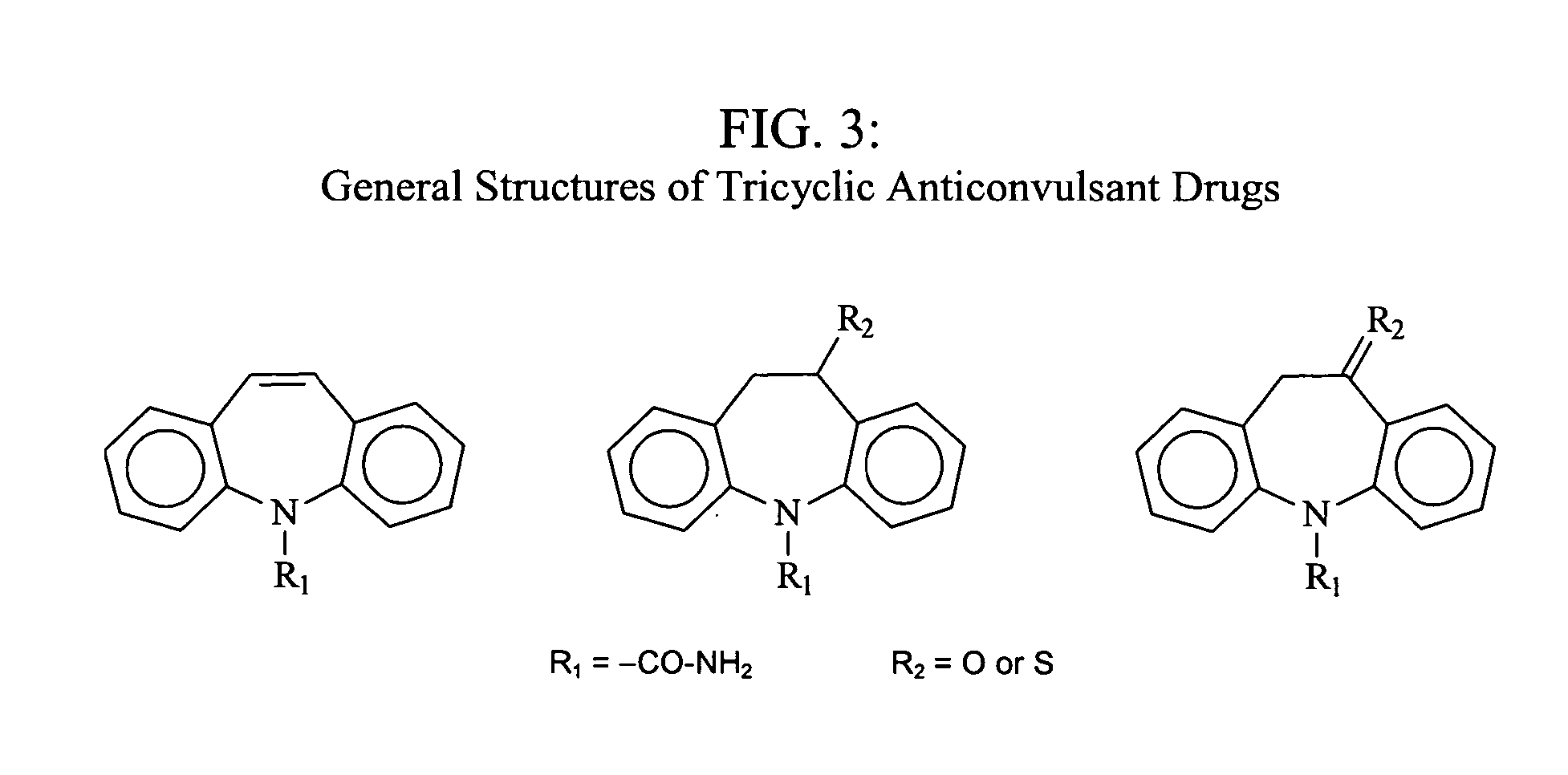Small-particle pharmaceutical formulations of antiseizure and antidementia agents and immunosuppressive agents
- Summary
- Abstract
- Description
- Claims
- Application Information
AI Technical Summary
Benefits of technology
Problems solved by technology
Method used
Image
Examples
example 1
Preparation of 1% Carbamazepine Suspension with Phospholipid Surface Coating (from U.S. patent application US2003 / 031719A1)
[0091] 2.08 g of carbamazepine was dissolved into 10 mL of N-methyl-2-pyrrolidinone (NMP). 1.0 mL of this concentrate was subsequently dripped at 0.1 mL / min into 20 mL of a stirred solution of 1.2% lecithin and 2.2% glycerin. As used in this patent application “percent” or “%” refers to percent weight / volume. The temperature of the lecithin system was held at 2-5° C. during the entire addition. The predispersion was next homogenized cold (5-15° C.) for 35 minutes at 15,000 psi. The pressure was increased to 23,000 psi and the homogenization was continued for another 20 minutes. The particles produced by the process had a mean diameter of 0.881 microns with 99% of the particles being less than 2.4 microns.
example 2
Preparation of 1% Carbamazepine Suspension With Solutol® (Polyethyleneglycol-660, 12-hydroxystearate) (from U.S. patent application US2003 / 031719A1)
[0092] A drug concentrate of 20% carbamazepine and 5% glycodeoxycholic acid in N-methyl-2-pyrrolidinone was prepared. The microprecipitation step involved adding the drug concentrate to the receiving solution (distilled water) at a rate of 0.1 mL / min. The receiving solution was stirred at 500 rpm and maintained at approximately 4° C. during precipitation. After precipitation, the final ingredient concentrations were 1% carbamazepine and 0.25% glycodeoxycholate. The drug crystals were examined under a light microscope using positive phase contrast (at 400×magnification). The precipitate consisted of fine needles approximately 2.5 microns in diameter and ranging from 50-150 microns in length. Comparison of the precipitate with the raw material before precipitation reveals that the precipitation step in the presence of surface modifier (gl...
example 3
Preparation of 1% Carbamazepine Suspension with a Bile Salt and Polyether Surfactant
[0095] A drug concentrate comprising 20% carbamazepine and 5% glycodeoxycholic acid in N-methyl-2-pyrrolidinone was prepared. The microprecipitation step involved adding the drug concentrate to the receiving solution (distilled water) at a rate of 10 mL / min. The receiving solution was stirred and maintained at approximately 5° C. during precipitation. After precipitation, the final ingredient concentrations were 1% carbamazepine and 0.25% glycodeoxycholate. The precipitate was then homogenized (Avestin C-160 piston-gap homogenizer) at approximately 25,000 psi for approximately 20 passes. An aliquot of this nanosuspension was centrifuged and the supernatant replaced with a solution consisting of 0.06% glycodeoxycholate and 0.06% Poloxamer 188. After centrifugation and supernatant replacement, the suspension ingredient concentrations were 1% carbamazepine, 0.06% glycodeoxycholate, and 0.06% Poloxamer ...
PUM
| Property | Measurement | Unit |
|---|---|---|
| particle size | aaaaa | aaaaa |
| diameter | aaaaa | aaaaa |
| particle size | aaaaa | aaaaa |
Abstract
Description
Claims
Application Information
 Login to View More
Login to View More - R&D
- Intellectual Property
- Life Sciences
- Materials
- Tech Scout
- Unparalleled Data Quality
- Higher Quality Content
- 60% Fewer Hallucinations
Browse by: Latest US Patents, China's latest patents, Technical Efficacy Thesaurus, Application Domain, Technology Topic, Popular Technical Reports.
© 2025 PatSnap. All rights reserved.Legal|Privacy policy|Modern Slavery Act Transparency Statement|Sitemap|About US| Contact US: help@patsnap.com


